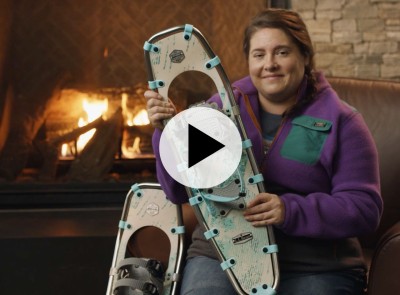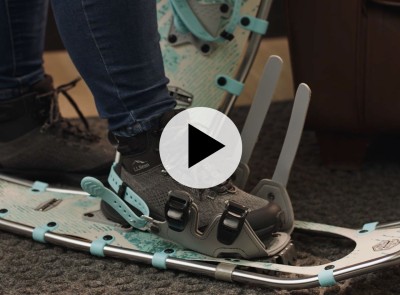(DESCRIPTION)
[00:00:00.00] Sizing Skis.
(SPEECH)
[00:00:01.08] Hey. Mackenzie here. And I love cross-country skiing. But sometimes when you're first starting out, it can be hard to determine which size ski you need. But that's why I'm here to help. So let's get started.
(DESCRIPTION)
[00:00:13.11] Types of Skis.
(SPEECH)
[00:00:14.52] Cross-country skis can be divided into two categories, classic and skate. Classic skis come in three types, touring, performance, and backcountry. Touring skis are sort of a hybrid that can be used in groom touring centers, or for cutting your own trail in the woods. Performance skis are longer, narrower skis designed for machine groomed trails. Backcountry skis are shorter, wider skis with a metal edge. These are designed for anything from expeditions in your local woods, to some more serious expeditions in the wild.
[00:00:48.51] Then you have skate skis. These are the only skis that have no grip on the bottom. Skate skis are strictly for use at groomed cross-country ski centers. They require a wide lane because as their name suggests, you use a skating stride to move forward. If fast is your speed, these are the skis for you. Now there are a lot of different types of cross-country skis. But when you're first starting out, most people recommend a touring ski because those can be used practically anywhere.
(DESCRIPTION)
[00:01:17.50] Right Size.
(SPEECH)
[00:01:18.36] Ski size is based off of body weight. And each ski size has an ideal weight range. For example, this 165-centimeter ski has a weight range of 100 to 120 pounds. But this 185-centimeter ski has a weight range of 150 to 180 pounds. Another thing to think about is skill level. If you're a beginner in between two sizes, choose the shorter ski. This will keep you in control, keep your speed down, and keep your face out of the snow.
[00:01:47.52] If you're experienced and a good skier, go for it. Opt for the longer, faster ski. Whoo-hoo.
(DESCRIPTION)
[00:01:53.61] Add Extra Weight.
(SPEECH)
[00:01:54.72] For all skis, you want to factor in the amount of extra weight you'll be carrying, including your clothes. If your goal is backcountry camping and you'll be carrying a heavy pack, you want to make your best estimate of the amount of weight you'll be carrying and add that to your body weight. Be sure to consider the average snow conditions for where you live.
[00:02:11.67] For instance, if you live in an inland area where snow is plentiful and conditions are often good, err on the side of a longer ski within your range. If you live in an area where snow conditions are thin and icy, go with the shorter ski for more control and traction.
(DESCRIPTION)
[00:02:26.74] The Right Length.
(SPEECH)
[00:02:27.84] By choosing the right ski length, you'll have the best combination of grip and glide. You'll also find it easier to stop and turn. Having the right ski length will make a huge difference, especially if it's your first time out on the snow.
[00:02:41.10] If skis are too short, you'll be too heavy for the ski. And the grip section of the ski will always be compressed into the snow. They'll grip like crazy but they won't glide well at all. Skis that are too long will glide super fast, but you won't be heavy enough to compress the ski into the snow. And you won't get the grip that you need.
[00:03:00.03] To make it easy peasy, we've added a size chart of weight ranges to all of our skis at llbean.com. It's just like looking at a size chart to buy a shirt, but this one is for skis. Now you're ready to get out there and hit the snow. For more skiing how-to videos, like cross-country skiing tips and tricks for beginners, check out our Get Outside Guide at llbean.com/outside.
(DESCRIPTION)
[00:03:21.92] McKenzie grabs the skis.
(SPEECH)
[00:03:23.52] All this cross-country ski talk, I've got to get out there. For more skiing how-to videos, check out our Get Outside Guide at llbean.com/outside.
[00:03:32.49] [MUSIC PLAYING]
(DESCRIPTION)
[00:03:43.29] McKenzie hits the slopes.








